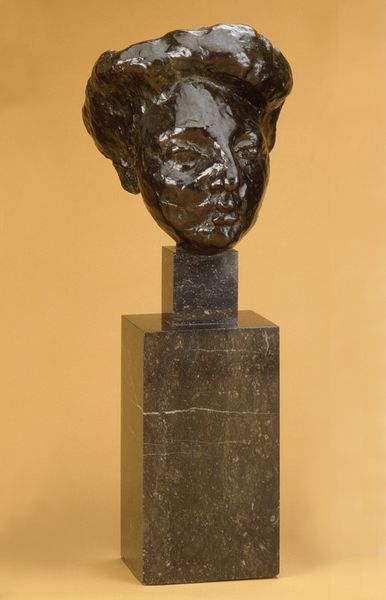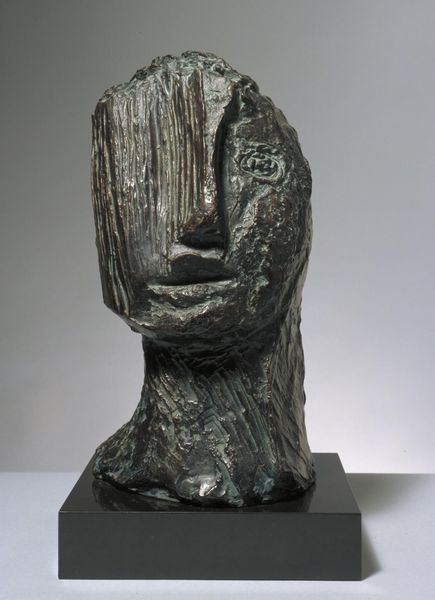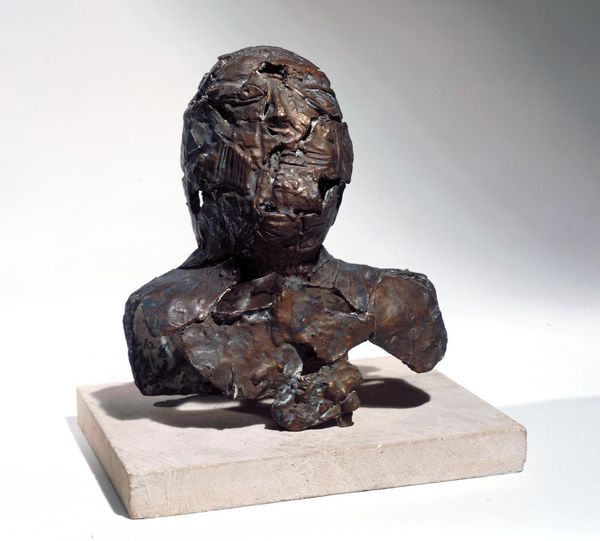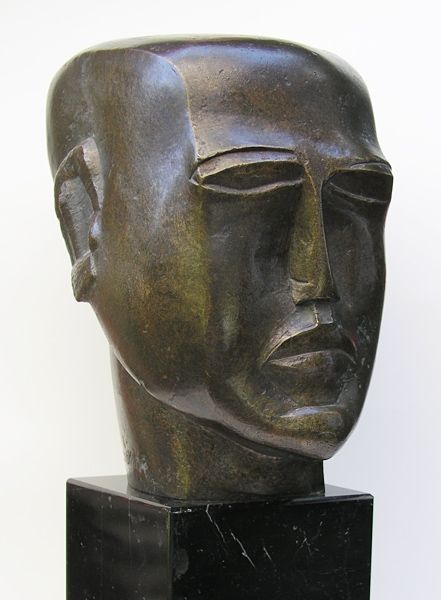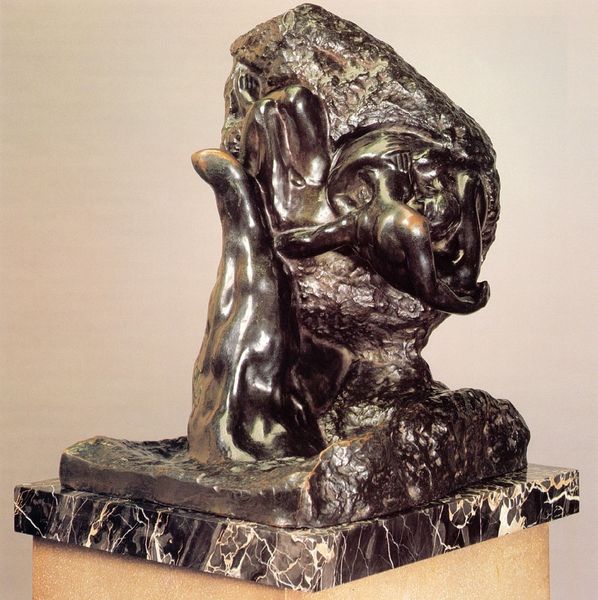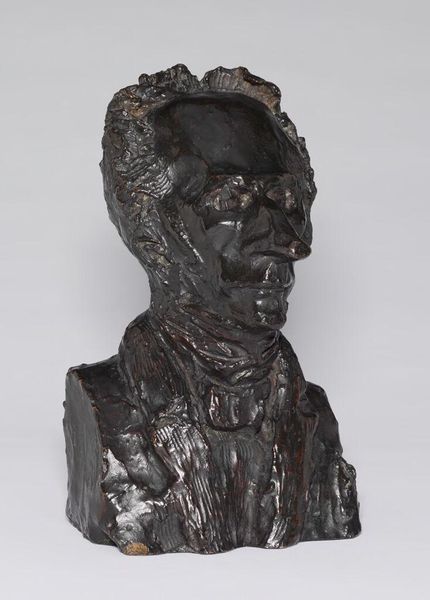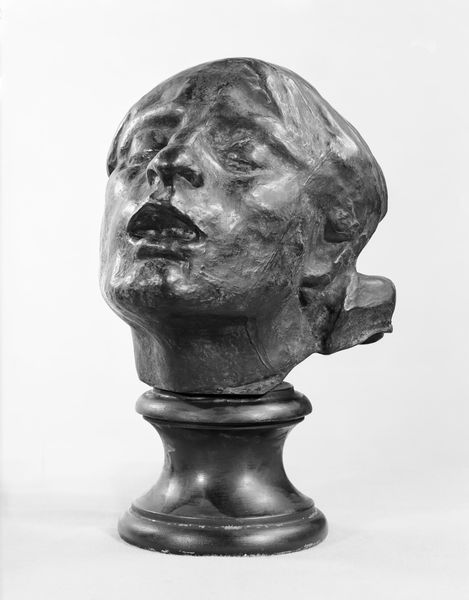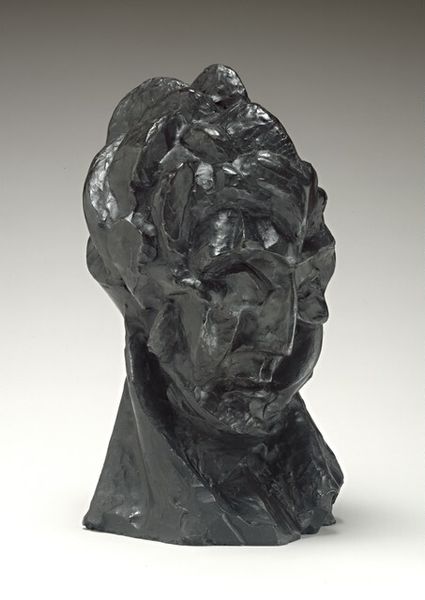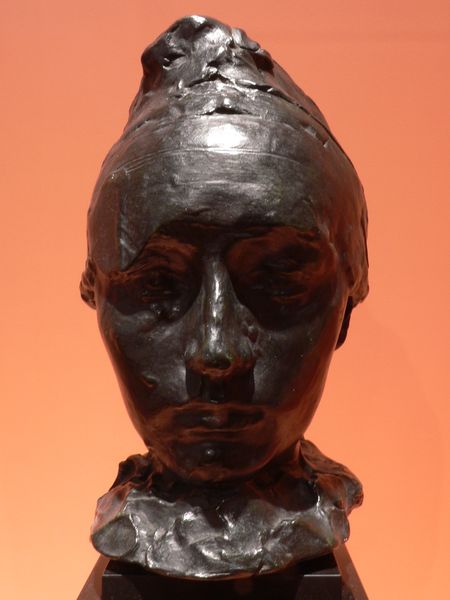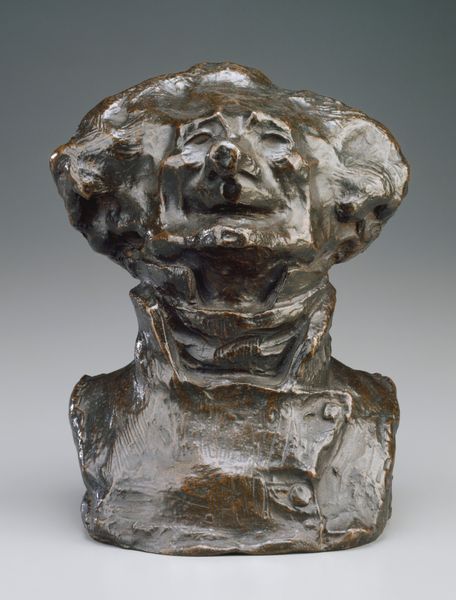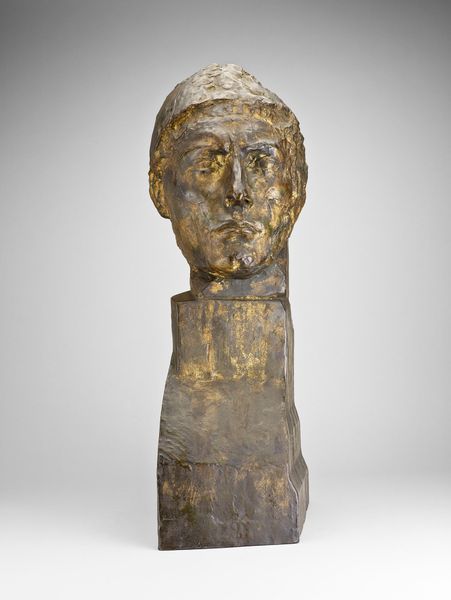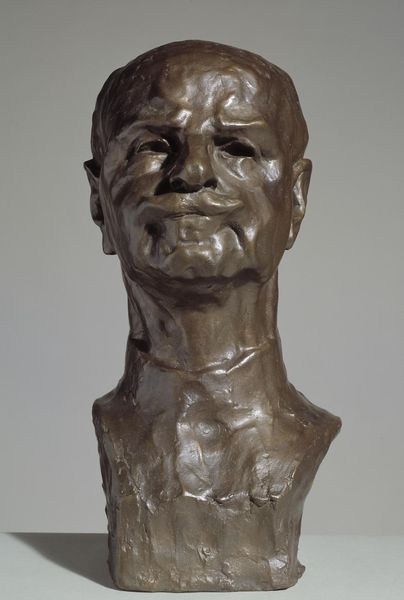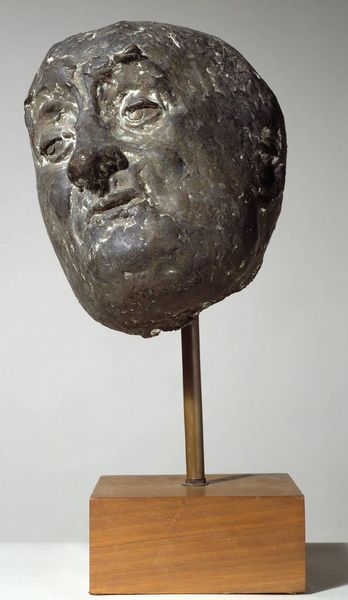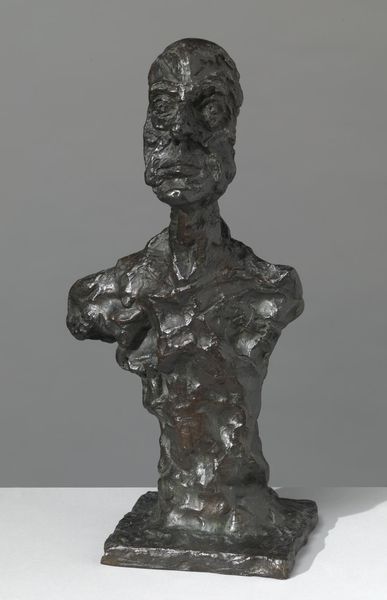
Dimensions: object: 390 x 285 x 290 mm, 11.2 kg
Copyright: © The Eduardo Paolozzi Foundation | CC-BY-NC-ND 4.0 DEED, Photo: Tate
Curator: Sir Eduardo Paolozzi's bronze sculpture, "Count Basie," certainly grabs your attention, doesn't it? Editor: It does. I find the fragmented, almost robotic features quite unsettling, yet strangely compelling. The patinated bronze gives it an archaic feel. Curator: The imagery almost evokes a futuristic totem, a merging of man and machine perhaps reflecting Paolozzi's fascination with technology's impact. It seems he's channeling some kind of cultural memory through this jazz icon. Editor: Absolutely. It makes me consider how celebrity and persona are constructed and preserved through art, almost like a monument to a cultural figure, even if abstract. Curator: The jazz musician becomes an enduring symbol in this work. Editor: A somewhat haunting one, but a powerful one nonetheless.
Comments
Join the conversation
Join millions of artists and users on Artera today and experience the ultimate creative platform.
tate 6 months ago
⋮
Paolozzi has attempted to re-invigorate the rather moribund state of portrait sculpture in the twentieth century. His portrait busts since his 'Mr. Cruikshank' of 1950 have been made in interchangeable sections and many parts are recycled. He has made busts both on commission and of people he admires. Paolozzi bought a plastic toy mouth which was also a harmonica. He like the mouth and its aural connection, and decided to utilise a cast of it in this head. Count Basie was an American jazz pianist and band leader and the artist has admired him since the age of fourteen. This bronze cast is one of an edition of three, and all three have different patinations. Gallery label, September 2004
